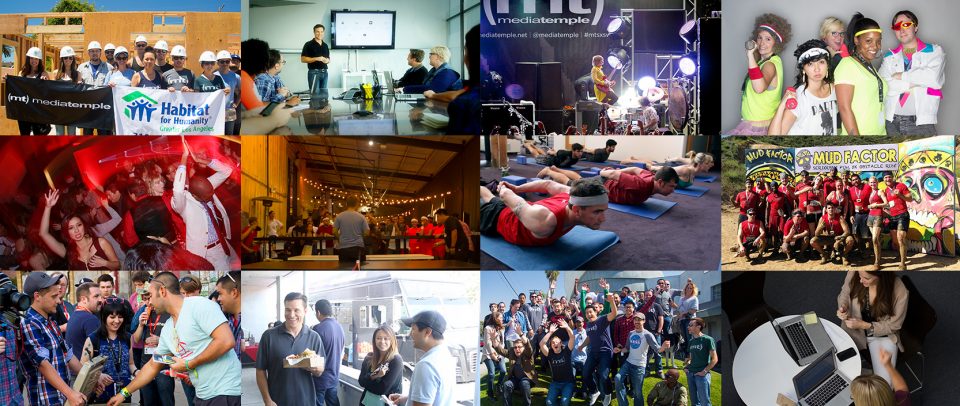Corporate Culture - You Can't Fake It
This blog post was originally published on RussReeder.com.
Smart companies embrace the notion that employee engagement is the grease that turns the gears of innovation and growth. Perhaps more true in technology than other industries, the soul of tech companies lies in their culture.
It is both an observed phenomenon and anecdotal notion that great workplace culture boosts creativity, productivity, and innovation, driving financial performance and enabling companies to challenge norms and set new trends. Startups and mature entities alike strive to push their staff (and, often, third-party consultants) to find that perfect cultural chemistry and balance within their four walls. Top-down, bottoms-up, mimic successful recipes, tried and true consultants, forced “organic” growth… Far too often, nothing works quite well enough. Companies that try to “fake it til they make it” to appear something they are not fool no one if they do culture wrong — in spite of launching amazing products that are solving the right problems for their customers.
Although corporate culture might seem like one of those ethereal concepts that are hard to pinpoint, here are some quick thoughts (based on my experience at Media Temple and the three other technology companies I’ve led) on helping shape and mold company culture the right way.
“Engaging the hearts, minds, and hands of talent is the most sustainable source of competitive advantage.”
Greg Harris, Quantum Workplace
Create an Environment of Trust and Respect
The golden rule applies just about everywhere in life, including the office: Always treat people the way you would want them to treat you.
Build, encourage, exemplify and foster mutual trust and respect both vertically and horizontally with and within your teams. Trust and respect happen when data and accountability consistently exist across your organization. Conversely, fear should not be one of your company’s unwritten (or written!) values. Instead, build an environment where transparent and authentic conversations happen organically and often, which can fuel ideas, solutions, and change while encouraging employees to own outcomes. The right balance of trust combined with accountability allows great business ideas to flourish.
Top-Down and Bottoms-Up
Culture isn’t created, it grows from within. However, it isn’t triggered by a mystical “Big Bang”: It requires seeding, nourishing and cultivating from both the top-down and bottoms-up. Executives have tremendous influence over how and when culture-building blocks can be introduced to their teams while employees should be asked to provide input as to the makeup of those building blocks. Involvement of HR (also known as the “Employee Experience team” at Media Temple) is necessary to provide structure, guidance and continuity of what will eventually coalesce into a tangible culture.
Once you’ve figured it out, don’t make the mistake and simply “set it and forget it” — leadership changes, companies evolve and so should your culture. In other words, always keep cultivating your company culture.
People First
“To win in the marketplace, you must first win in the workplace.”
Doug Conant, Campbell Soup
Media Temple is a people-first company. We define “people first”, as putting our customers and partners first as well as focusing on the “people behind the brand,” i.e. our employees. Media Temple is nothing without its (extraordinary) people.
Because culture can be so quickly fleeting, in addition to assessing talent and capabilities, candidate interviews and employee performances at Media Temple are measured against our core company values (something GoDaddy has replicated and looked to Media Temple to help implement). That way we know both existing talent and new hires are (still) a good cultural fit and will contribute to sustaining the integrity of our core values. Almost every instance where rock-star candidates were hired with the hopes they’d adapt into our culture backfired and resulted in parting ways with them. Bottom line is: Don’t hire people only because they can get the job done.
And because a video is worth a million words, I thought I would share something we created last year at Media Temple to describe who we are as a company and what our people-first culture is all about.
Culture as a Company Goal
As a team lead, department head or the Chief Experience Officer, how can you help establish a foundation that ultimately paves the way to great workplace culture? First, give your employees a common goal, a company objective that is clearly established and openly shared, and that can be referenced throughout your organization as a guiding “North Star”. Alignment is rarely a stated goal and is often the root cause of poor culture. Secondly, trust and respect begins and ends with you. Be the Chief Accountability Officer and live it out with your team. Finally, don’t get complacent with company culture. Continue to recruit thought and culture leaders to your organization while reinforcing core values to your team.
If you haven’t started 2015 with culture as a goal, there’s no better time than January to add it to the top of your list of New Year’s resolutions.




